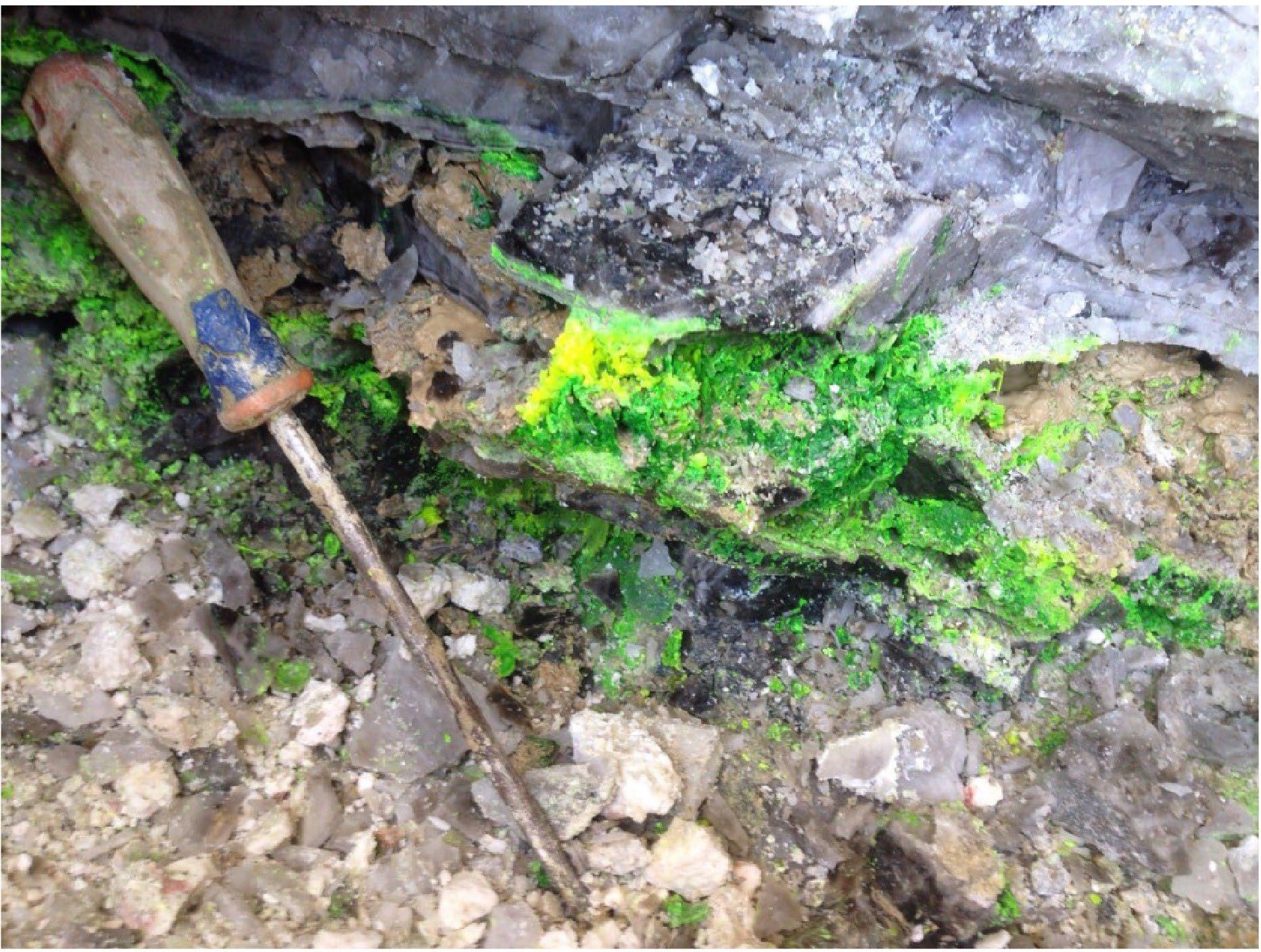
3 minute read
The extraordinary finding of uranyl minerals at Assunçao mine (Viseu, Portugal), with an account on other mineral species
Julio 2016
The Assunçao or Nossa Senhora da Assunçao mine, in Aldeia Nova, Ferreira de Aves, Sátao (Viseu, Portugal), benefits industrial minerals from a beryllium-rich pegmatitic field. The primary minerals are beryl, quartz, feldspar and phosphates (triplite, triphylite, isokite and apatites). Aside of its richness in beryllium, the pegmatite is also rich in lithium, niobium and uranium.
Advertisement
The mine became well known world-wide thanks to the strong hydrothermal alteration suffered by the pegmatitic body; it leads to an impressive paragenesis of secondary minerals, from the kaolin (one of the industrial minerals mined in Assunçao along with feldspar) to very rare species, with particular attention to the phosphates. The redissolution of beryl lead to the formation of good bertrandite crystals, and the mobilization of primary phosphates, together with the richness in uranium, made possible the crystallization of uranyl ph osphates in one of the bests occurrences of uranyl micas (phosphates of uranyl and other cation) in the Iberian Peninsula.
During 2014 - 2015, one of us found an extraordinary accumulation of uranyl phosphates, mainly autunite, which formed very remarkable specimens, in both size and quality. The finding was composed mainly by autunite accompanied by world-class phurcalite and torbernite.
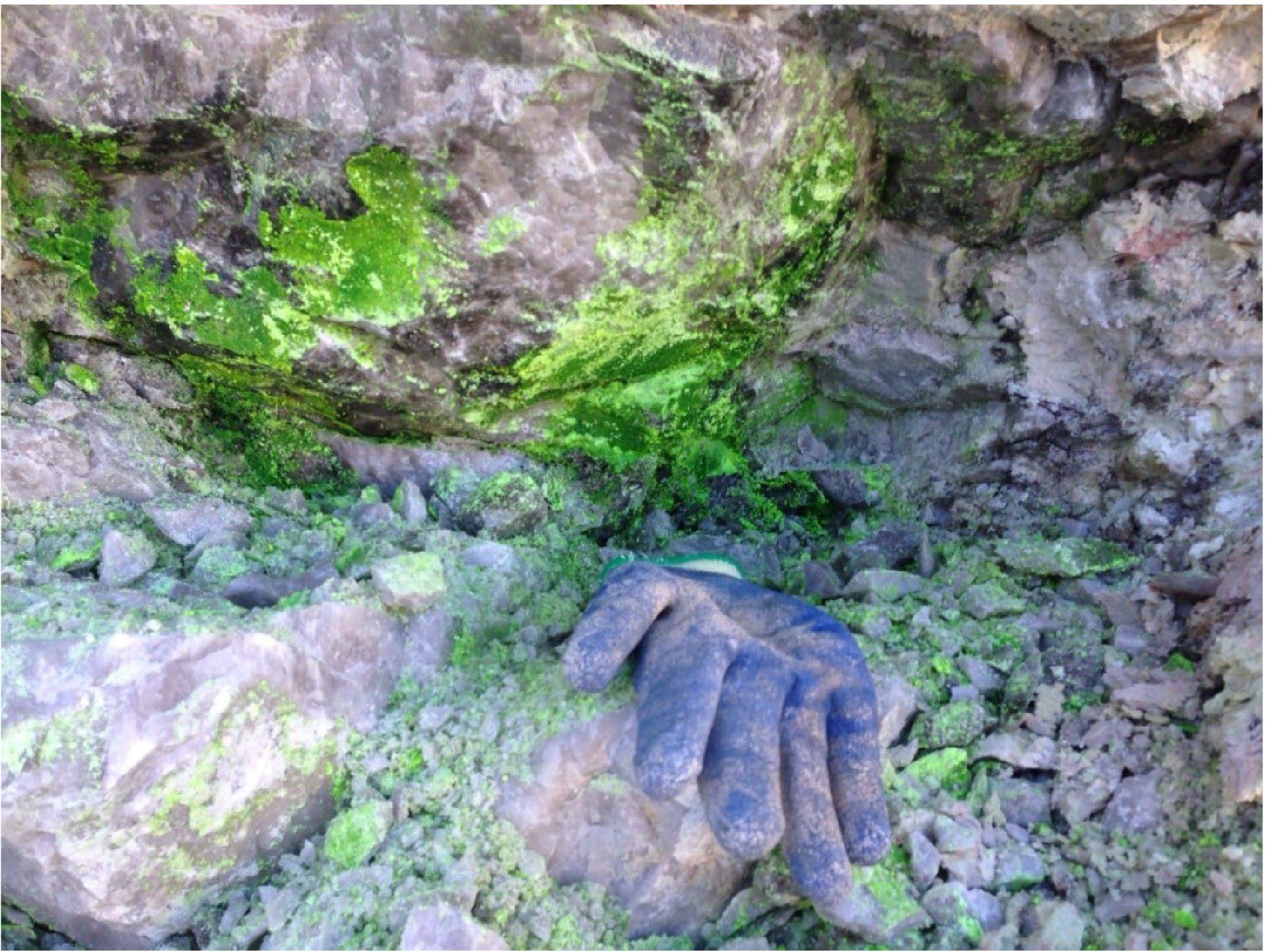
The accumulation of fluids from alteration of primary minerals in a fracture over an impermeable dike favored the crystallization of secondary phosphate minerals

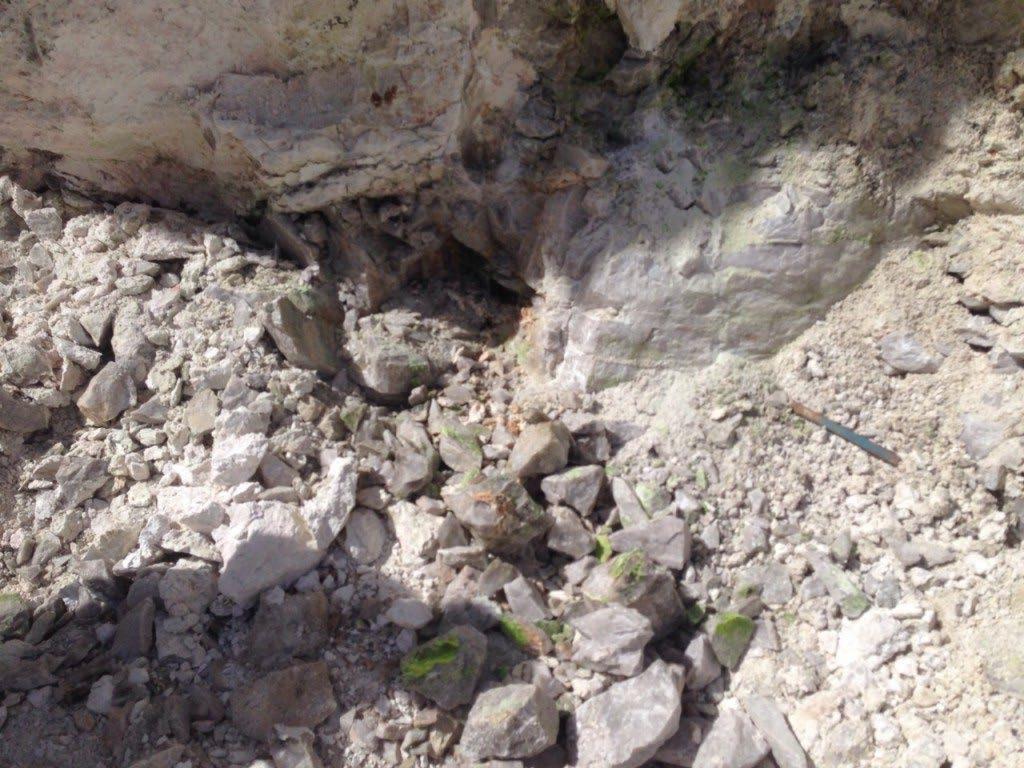
Zone of the finding. Pocket with autunite specimens and view of the contact.

Phurcalite
One of the interesting features of this finding was the occurrence of very good specimens of the rare calcium-uranyl phosphate phurcalite , in a first crystallization stage previous to the formation of autunite, probably due to the high saturation of uranyl.
Phurcalite
Phurcalite (yellow) and fresh autunite still not dehydrated (green) on smoky quartz


Raman spectroscopic analysis of phurcalite from the specimen above


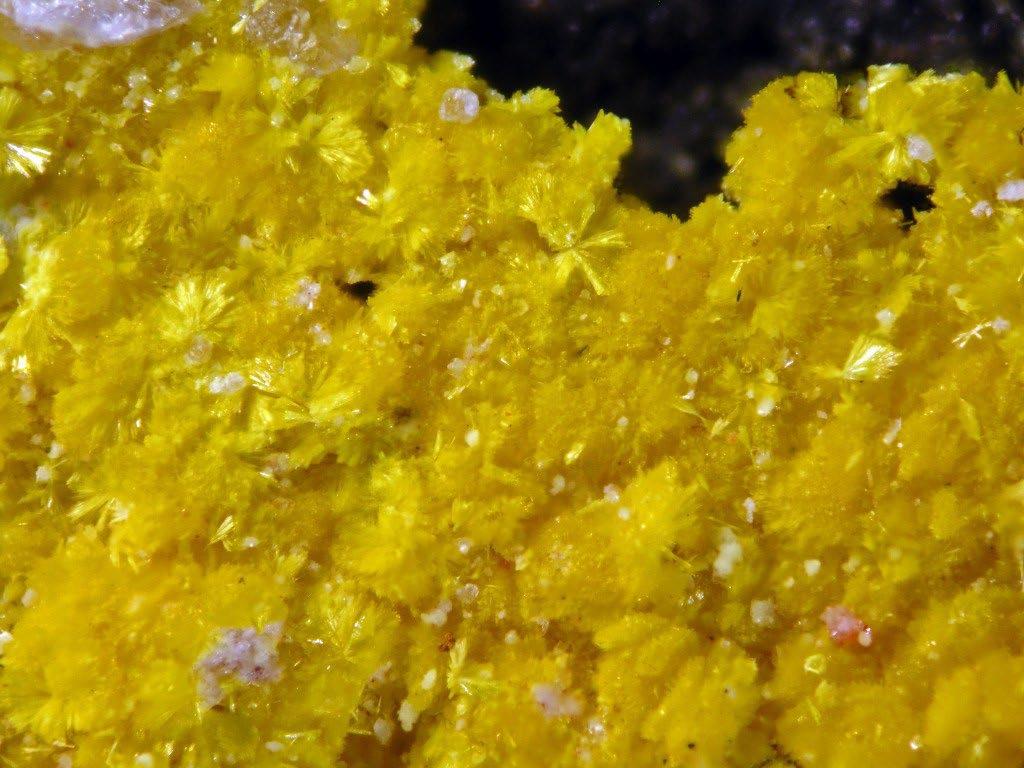
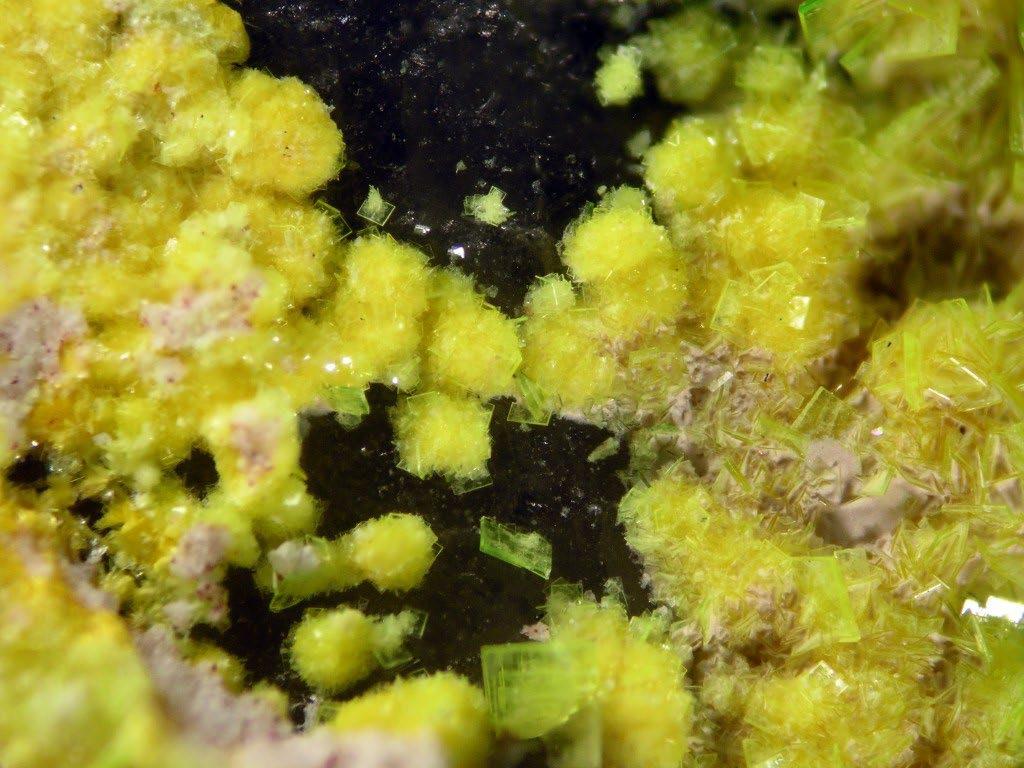
One of the extraordinary phurcalite specimens collected during this sampling campaigns, and characterized by us, is now part of the extraordinary collection from Mim Museum, in Beirut (Lebanon):

Phurcalite
Autunite-metaautunite
We had the opportunity to observe real, hydrated autunite. Some specimens were under water in the mine, and were preserved in water-filled containers to avoid dehydration. But the transformation in metaautunite is very fast and unavoidable once the specimen were extracted. One peculiarity of the autunite of Assunçao is its color, ranging from the classic yellow to green. The color is not an indicator of species and the analysis is unambiguous:
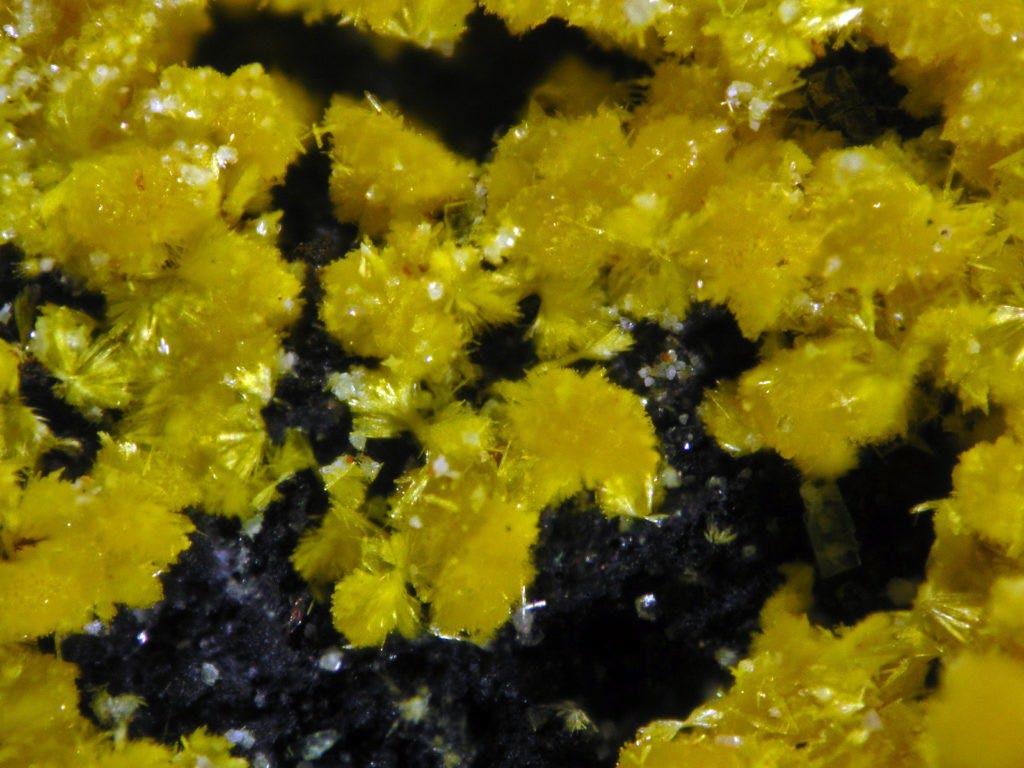
Another interesting feature of the autunite is the coexistence of autunite with primary metaautunite; it is possible that some metaautunite from Assunçao crystallized at the same stage of autunite, due to variations in water activity, not formed exclusively by autunite dehydration. Also, several dehydration grades coexist in the samples.

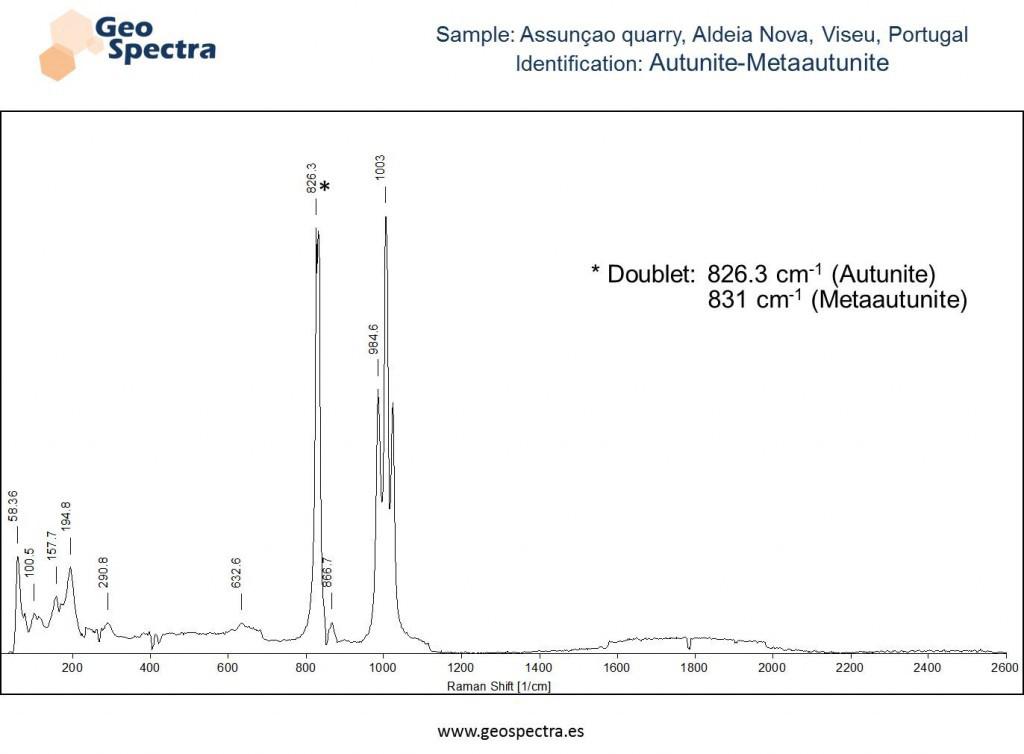


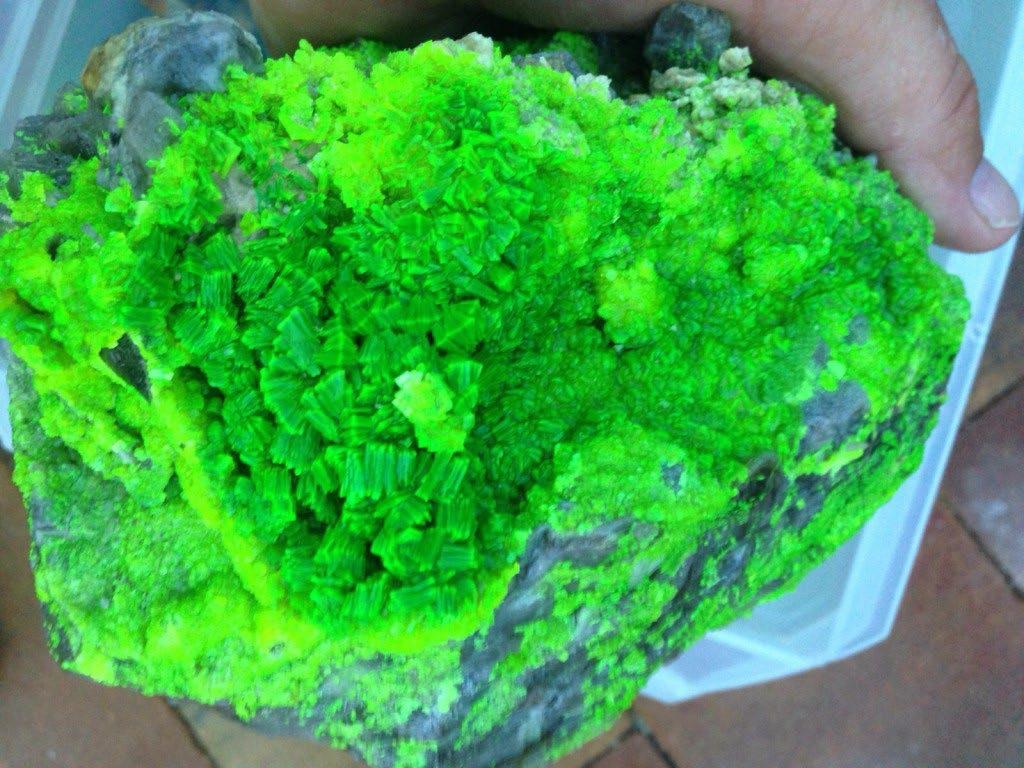
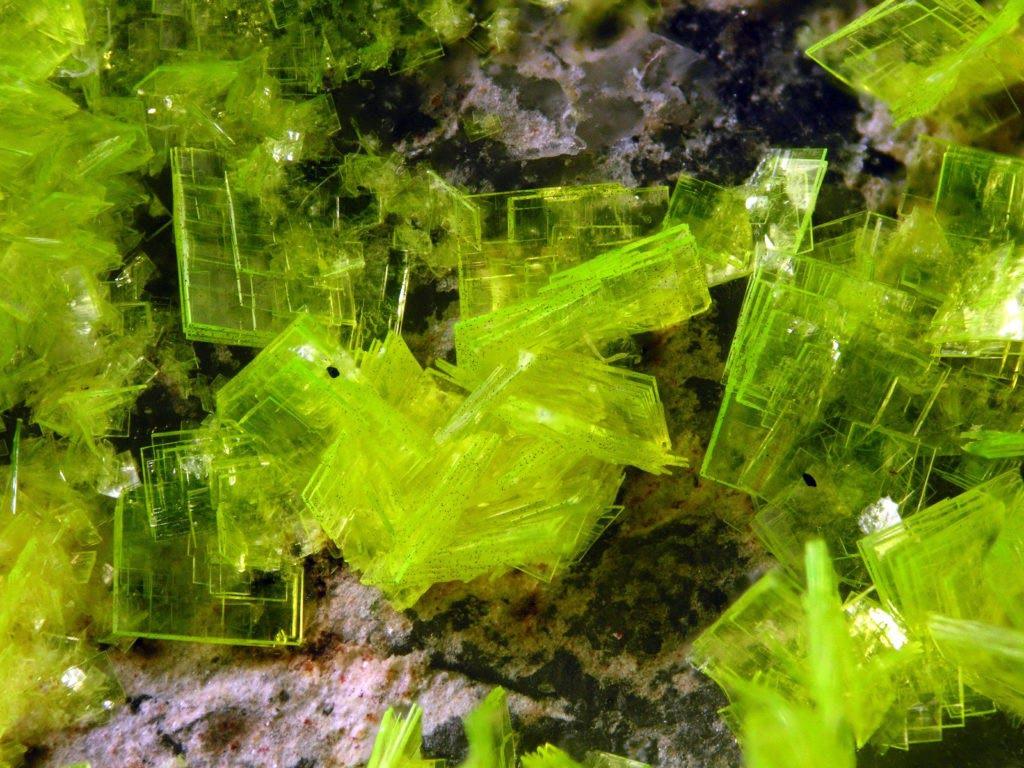
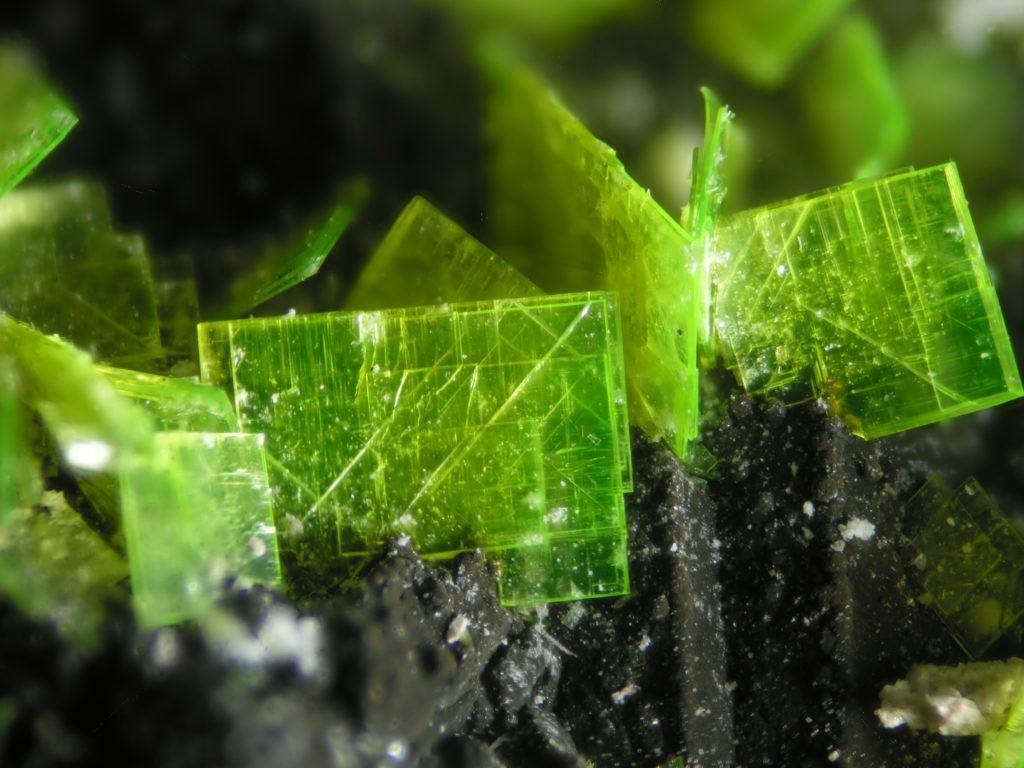
Metautunite seen under ultraviolet light.
Autunita cristalizada sobre cuarzo
Torbernite-metatorbernite




Metatorbernite
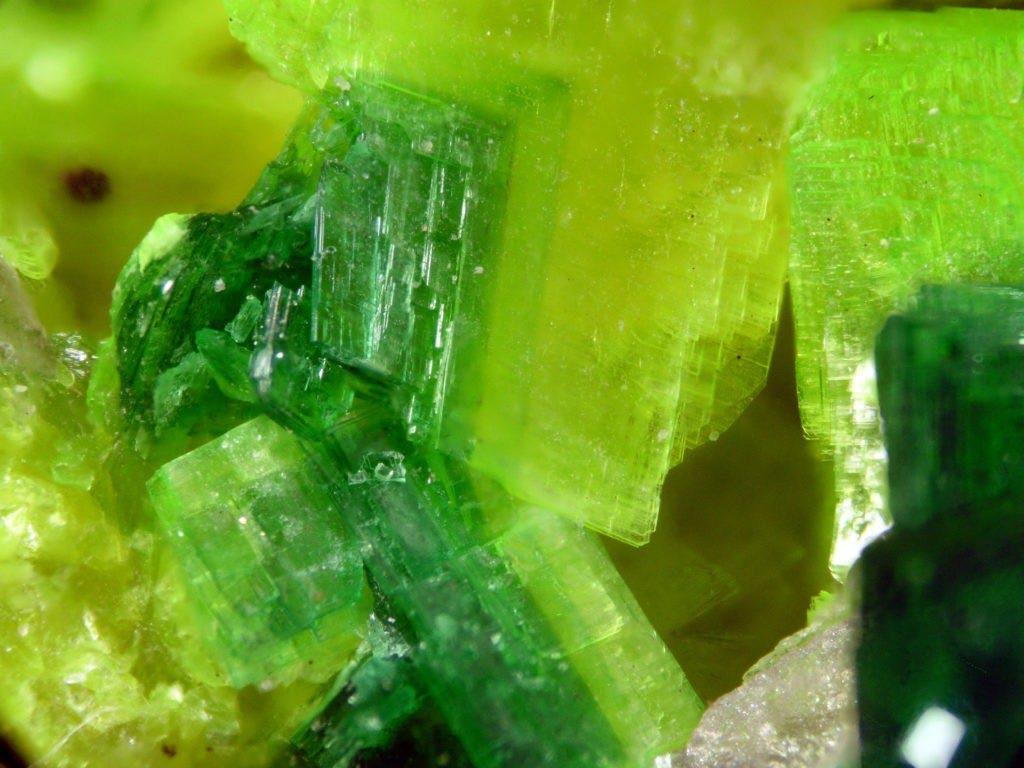

Zoning is common, sometimes, as in this case, revealed by cleavage. Autunite grown on previous torbernite and saléeite- autunite zoning have been observed. In some specimens, the green color or autunite could be due an inner torbernite crystalline core.
Primary uranium minerals
Uranium primary minerals (uraninite) and its first alteration products are uncommon in the mine, due to the intense oxidation of uranium to uranyl and precipitation of phosphates. But, it is still possible to find uranium oxides.
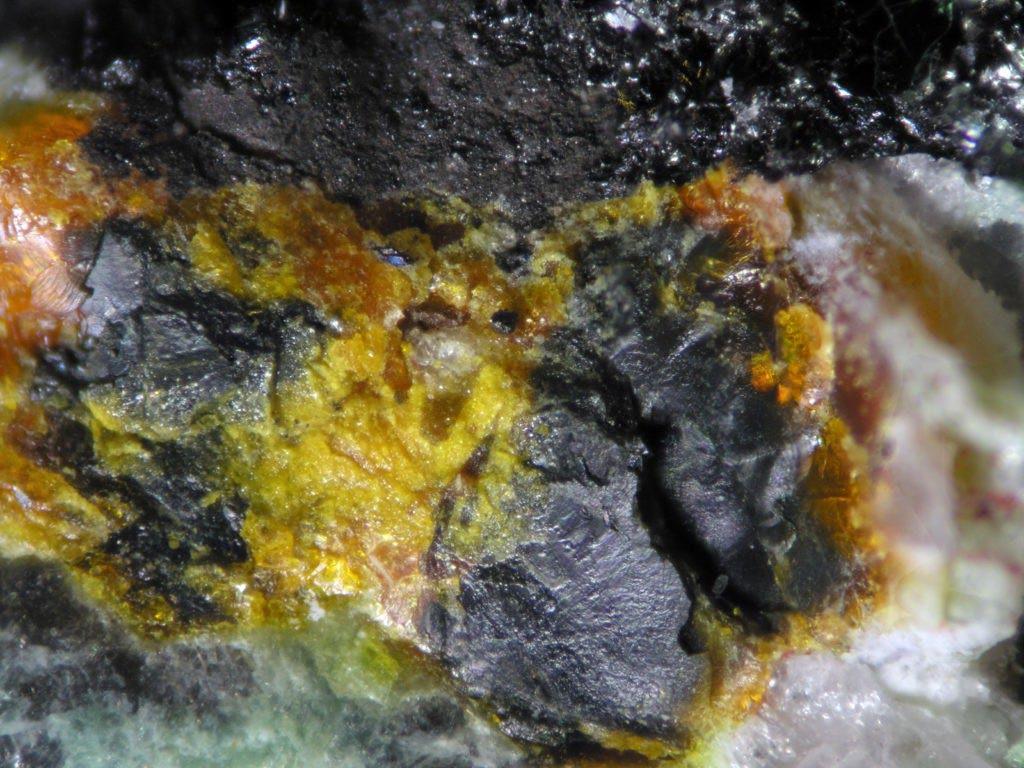
Schoepite
Other minerals
The Assunçao mine is well known for the variety and quality of minerals found in the pegmatitic body, which, as usual in the northern portuguese pegmatites, is rich in phosphate minerals. Other species found during this sampling campaign:
Bertrandite
Excellent bertrandite, a secondary beryllium silicate ( Be4(Si2O7)(OH)2 ) formed by hydrothermal alteration of primary beryl, were recovered in the mine:
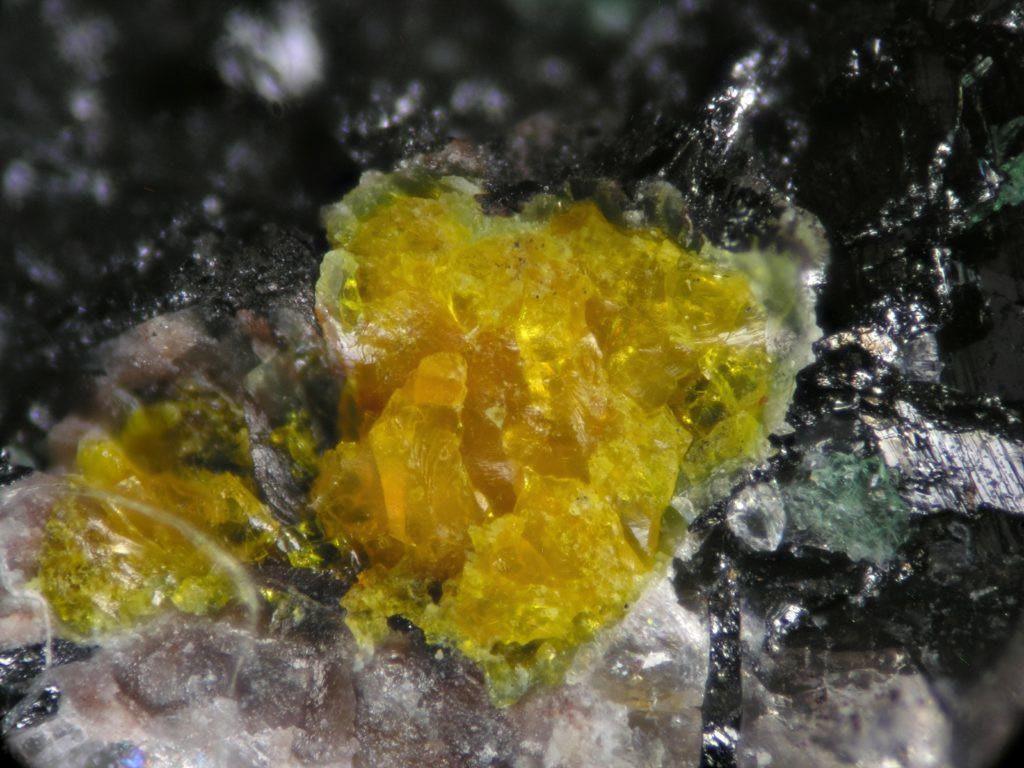
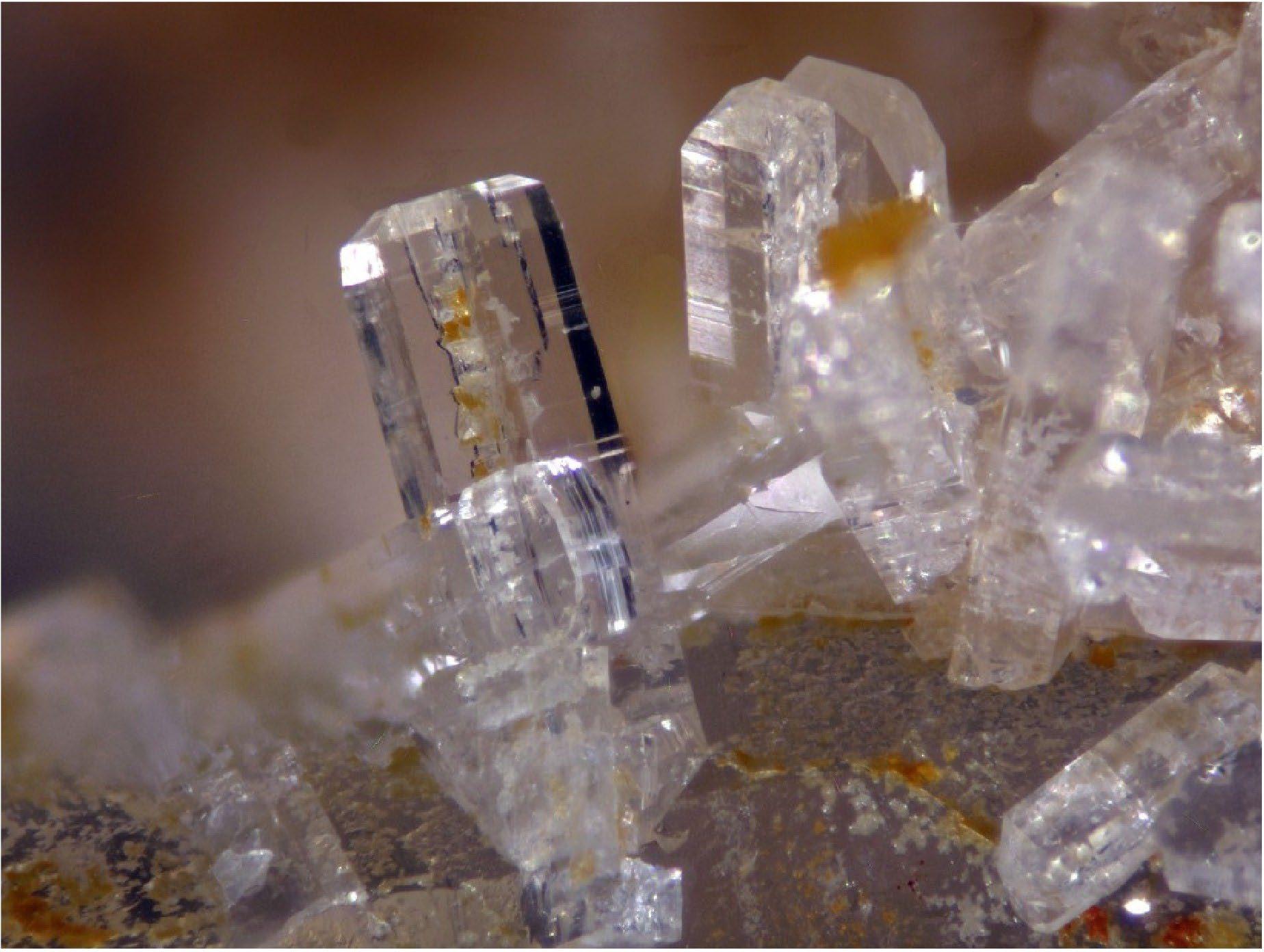
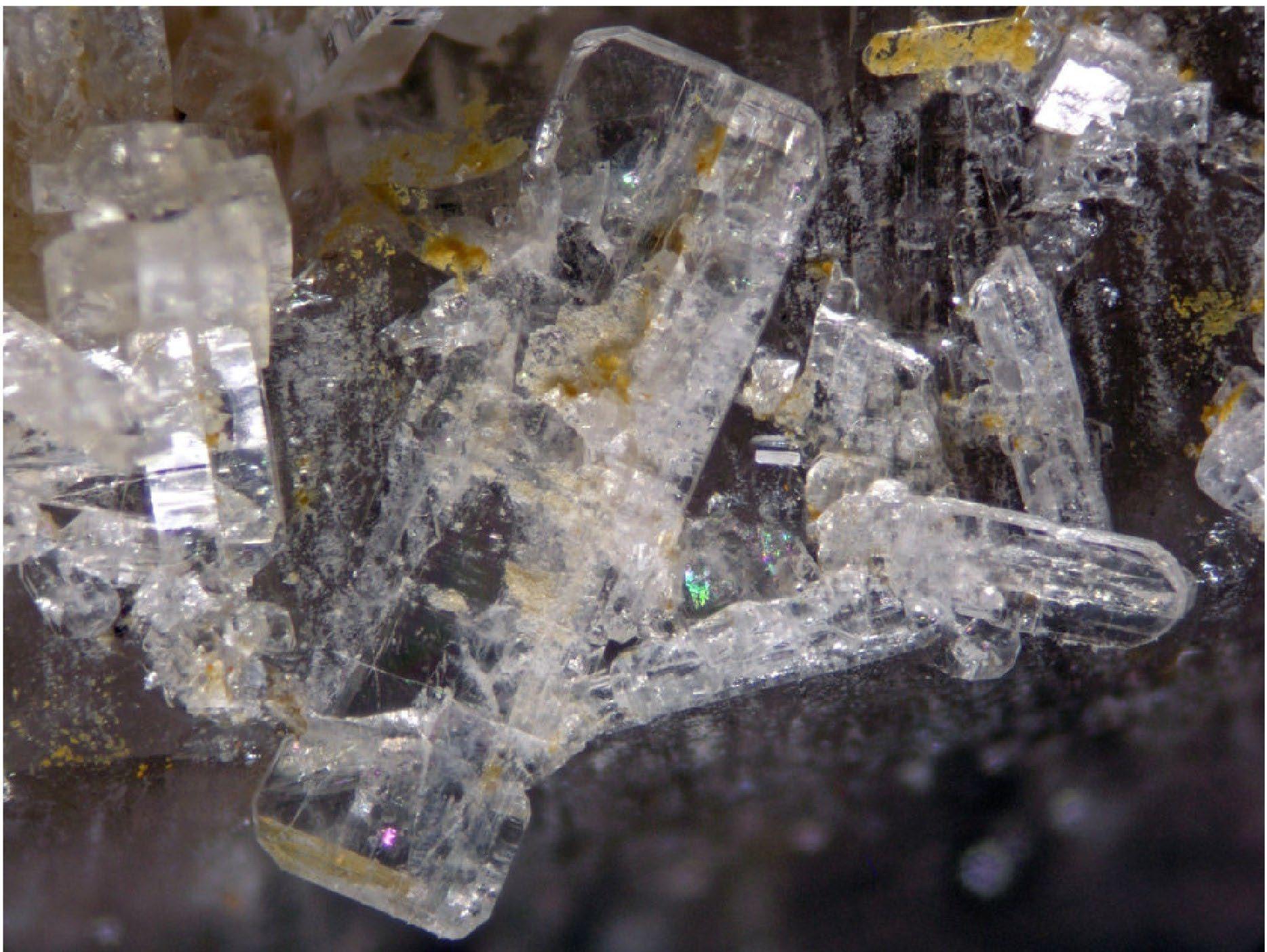
Centimetre-size bertrandite crystals


Mrazekite
A very rare secondary bismuth and copper phosphate
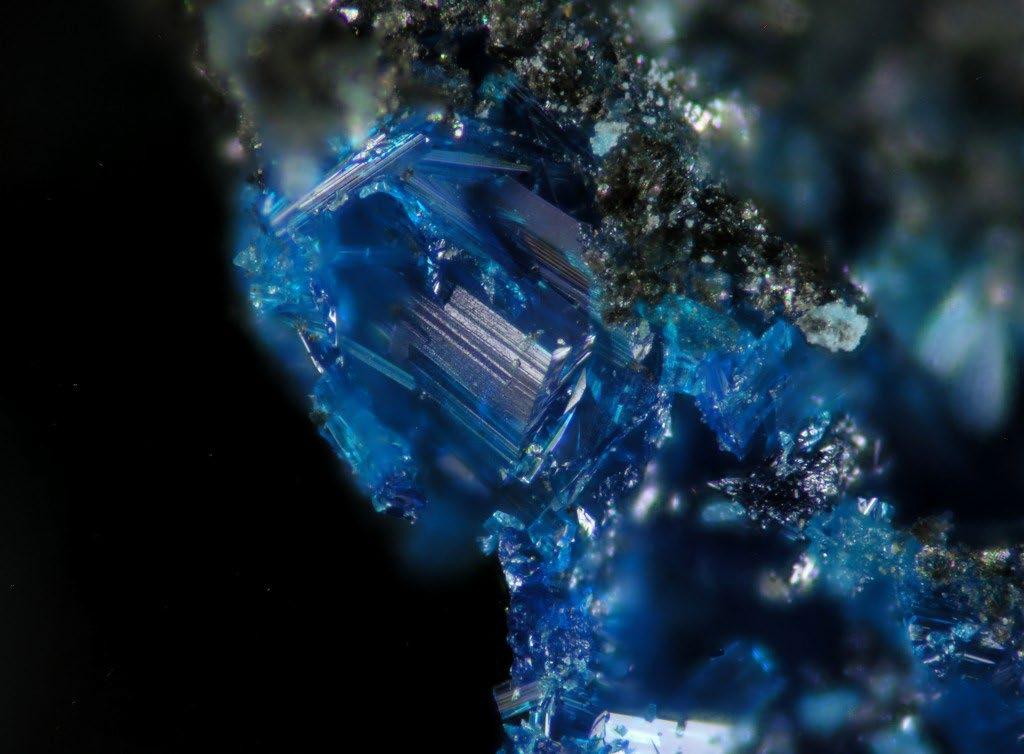
Riomarianaite
Related with the bismuth phosphate mrazekite, we found the very rare bismuth oxysulfate riomaranaite, in the form of very small yellowish-beige crystals.

Apatite group
A must in phosphate - rich pegmatites. We have found good specimens of hydroxylapatite, a less common mineral than the widespread fluorapatite. Hydroxylapatite probably was a more common mineral during Hadean, before of the rise of life; living organisms transformed and accumulated phosphate, transforming all the phosphate mineralogy. Now, pegmatites and some specific volcanic deposits are the places where primary phosphate mineralogy could be seen.


Columbite-Fe
The main niobe mineral of the deposit. The columbite-tantalite group is a common pegmatitic mineral.
Beryl
The primary beryllium mineral in the pegmatite body. The beryl suffered hydrothermal remobilization, leading to the formation of secondary bertrandite. So, it is common that beryl crystals from Assunçao appears attacked, corroded or partially dissolved.











